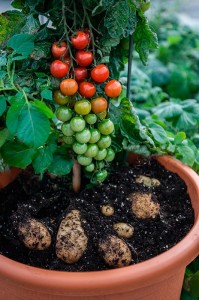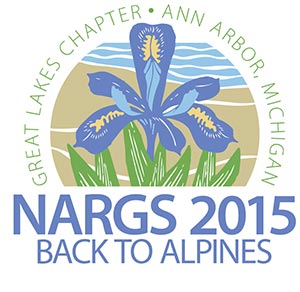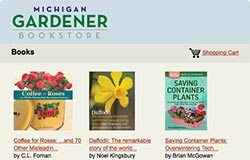How can I get ‘Nikko Blue’ hydrangeas that
have not flowered in years to bloom?
Hydrangeas are colorful flowering shrubs that aren’t bothered by pests or diseases, and can bloom for weeks at a time. The reason the flowers go on for so long is that the showy parts aren’t flower petals at all. They are colorful sepals that are sterile, but showy so that they attract pollinating insects. The fertile flowers, usually found in the center of the cluster, are quite small and inconspicuous. The sepals can’t be pollinated, which means they don’t go to seed, and that’s what prolongs the “flower” show.
Hydrangeas thrive in part-shade and prefer a moist, woodsy soil enriched with peat moss and leaf mold. For best success, water them well throughout the growing season.
Two words to remember when it comes to hydrangeas that refuse to flower is “too much.” Although hydrangeas grow well in some shade, too much shade can result in gorgeous leaves and no flowers. Another problem could be too much fertilizer, specifically high nitrogen fertilizer. This again will give beautiful leaves but few, if any, blooms. Use a balanced fertilizer such as 16-16-16 at the time they start to bloom. Too much water or too much dryness can also result in lack of flowers.
Most big leaf hydrangeas (H. macrophylla, also called “mopheads”) bloom on the previous season’s growth (old wood) and are reliably hardy to hardiness zone 6. In Michigan it is advisable to protect mophead hydrangeas to ensure bloom. The old wood of the hydrangea must survive in order to get blooms the following summer. ‘Nikko Blue’ is a mophead type that for many years was one of the few relatively hardy big-leafed types available. However, many gardeners protect it in early winter by stuffing fallen tree leaves around the shrub and covering it with an upturned bushel basket or burlap.
The choice of location is very important: place them close to the house, on the north or east side. The south or west side would expose them to afternoon sun, which is too hot in the summer and increases the chance of bud damage in the winter. In addition, unseasonably low temperatures after a mild winter also cause a lack of blooming on big leaf hydrangeas. If the plant is actively growing and hit by a late spring or early winter frost, the buds freeze and the hydrangea won’t bloom.
Another common reason why macrophylla hydrangeas don’t bloom is improper pruning. Again, most hydrangeas bloom on old growth (last year’s wood). If you prune too much old wood or you cut that wood too late, you won’t get blooms. These varieties set their buds after bloom in late summer, so spring pruning would remove that year’s flowers. The proper time to prune the flowering stems is soon after bloom, in late summer, back to a healthy pair of buds or shoots. The only pruning necessary in the spring is removing dead wood as new growth emerges.



